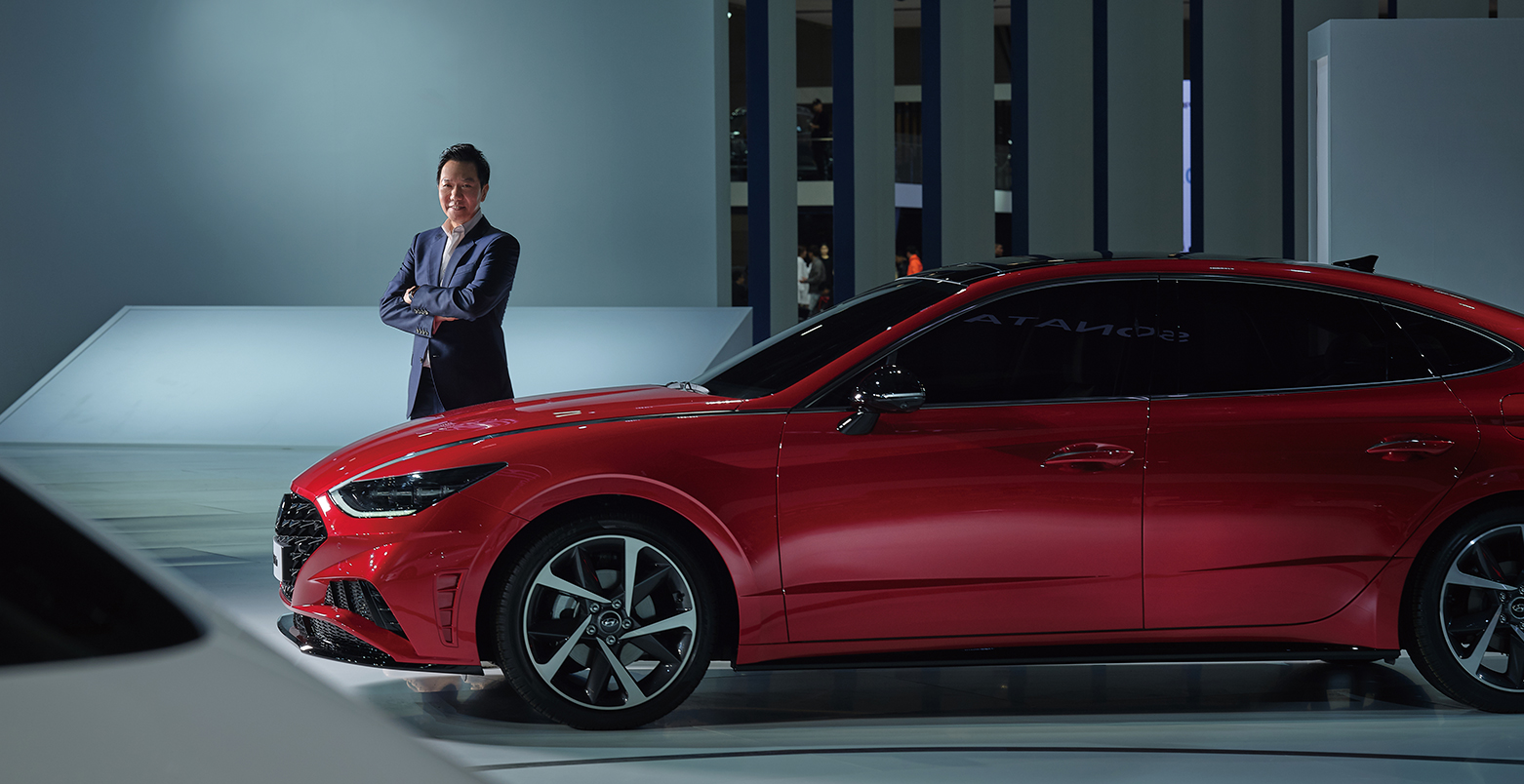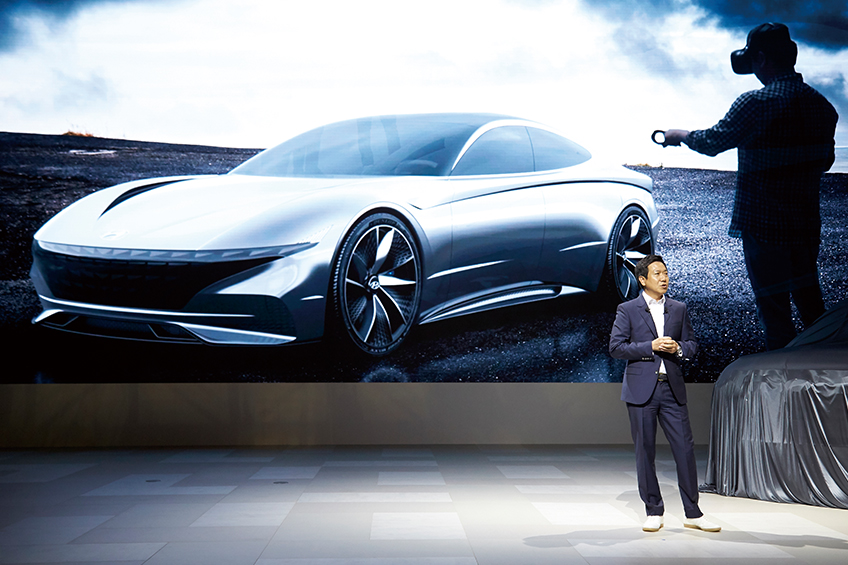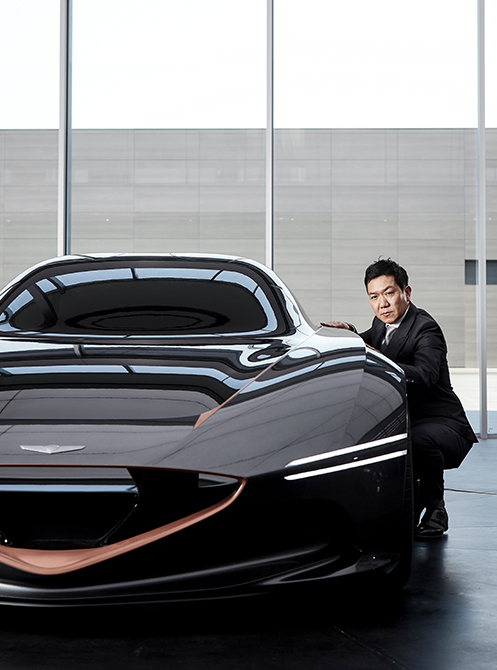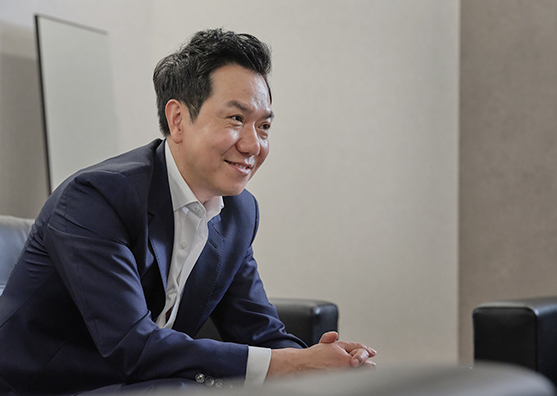
Contents










People · Written by Kim Samuel Photographed by Studio Kenn
Promoting Korea through Cars
Star Designer Transforms Global Auto Landscape
The Chevrolet Camaro has gained fame thanks to Bumblebee from the “Transformers” movie series.
The Bentley Flying Spur boasts unparalleled elegance and grace and the Continental GT has been reborn with a new identity.
The Hyundai Genesis G70 recently earned the honor of Motor Trend magazine’s 2019 Car of the Year.
These automotive masterpieces comprise the works of star car designer Lee SangYup, who attended this year’s Seoul Motor Show.


Lee SangYup’s track record as a car designer is considerably diverse. Starting out as an intern at Pininfarina, he has designed the go-to vehicles of leading automakers in several countries. At General Motors of the U.S. and Volkswagen of Germany, both of which produce more than nine million vehicles a year, he learned of the mass production system. Through higher-end automakers like Bentley, which manufactures only 9,000 vehicles a year, he experienced the ultra-luxurious line known as Exclusive Business.
Lee gained public attention for the first time in 2006 through the character Bumblebee, a robot that turns into a Chevrolet Camaro in the film “Transformers.” He comprehensively designed the Camaro’s exterior from the conceptual stage to mass production in 2008, receiving praise from many who proclaimed it “a 21st century, contemporary reinterpretation of the first-generation Camaro that came out in the late 1960s.” Lee dares not refer to the Camaro’s design as his own, saying, “Tom Peters, an excellent designer and mentor, and I designed the Camaro and Corvette together as a team. Of course, I often took the leading role, but the opportunity to work and make cars with members of the team, who knew the definition of an American car better than anyone else, was far more valuable than the outcome.”

Lee is an automobile designer but at the same time sees himself as a salesman who finds the needs of customers. © Lee SangYup
Driven by Hunger and Challenge
Lee studied the indigenous cultural elements of each country and lived like a local. Even while working at international car companies, he always went by his birth name, Lee SangYup, to display his Korean identity. “I might’ve had better drawing skills than others during my study abroad, but I had zero knowledge of automotive culture,” he said. “So thinking I had nothing to lose, I started to learn everything from the bottom up, and thankfully, a mentor was there for me every step of the way who had a good impression of me and my attitude. I mimicked the accents—and even jokes and clothes—of these multinational and multicultural mentors in trying to make it on my own. After a while, I molded my character into this unique form, resulting in an ability or trait that might be lacking in the designers I dearly respect and look up to.”
Leaving Korea at age 23, Lee said he was driven to succeed due to fears that he was a late bloomer, in addition to a sense of inferiority stemming from his perceived lack of knowledge compared to his peers. He said, “Even today when I see European designers, I often hear their stories of how they dreamed of becoming car designers by looking at their fathers’ Ferraris. My father didn’t even own a car, not even a small one. But I truly believed that such a dream car can be born in Korea.”
 Lee’s work, the Hyundai Genesis, has positioned itself as one of the most popular cars in the global luxury market. © Lee SangYup
Lee’s work, the Hyundai Genesis, has positioned itself as one of the most popular cars in the global luxury market. © Lee SangYup Concept car presentations are a critical moment for designers to showcase “the cars that represent society.” © Lee SangYup
Concept car presentations are a critical moment for designers to showcase “the cars that represent society.” © Lee SangYupDesigning Cars That Promote Korea
Returning to Korea after 25 years abroad to join Hyundai Motor, Lee assumed responsibility for a wide spectrum of cars from luxury models like the Genesis to mid- to large-size vehicles. “Ultimately, an excellent design is not on a glaring pretty car on display at a motor show. Rather, a great car harmonizes with a specific country’s landscape for five to ten years and exudes beauty even when seen on a street or alley,” he said.
The cars Lee has designed in his motherland are literally infused with a Korean quality. The Sonata, for which he took on an exclusive design role, has been one of the country’s signature cars with the nickname the “people’s car.” Reborn through Lee, the latest Sonata model offers a peek at contemporary Korea, Lee said, adding, “Renowned and luxury brands and brands for the masses alike all have design-based roots. The roots of the Genesis and Sonata are clearly based in Seoul. In Seoul, a modern city and time-honored tradition coexist amid adjoining broad plazas and narrow alleys, thus a unique harmony of disparate themes becomes the source of creativity. This is a blessing for a designer.”

A designer’s meticulous care breathes life into automobile design. © Lee SangYup
Best Project, Best Team
Lee SangYup is a team player. Wherever he goes, he never works alone. At Hyundai, he works with Luc Donckerwolke, a designer, boss and coworker whom Lee said he respects the most, at the center table while leaving their own desks behind. “When talking about design, it doesn’t matter who’s the boss. Of course, if an intense debate goes nowhere, Donckerwolke makes the final call, but those hours of positive back-and-forth arguments are when I get the most creative as a designer. I’m so lucky to work with such a partner with great passion for design and someone I respect,” Lee said.
Hyundai Design Center in Korea has more than 400 designers, while the carmaker’s branches in the U.S., Europe, China, India and Japan each have their own design centers. As head of design, Lee closely listens to the opinions of each and every designer. “Lifestyle and manner of conversation vary from one country to another. Thus a designer capable of changing even his own vision, depending on the market situation, is naturally more welcomed than that one who solely prioritizes his own vision,” he said.
Fast Adaptation Essential for Success
Typically, a car model enters mass production about three years after approval of the initial design, and is sold on the market for three to ten years. The most advanced technology used in the design stage is outdated by the time a consumer purchases the car. Lee demands from himself and his coworkers a design that accurately captures and leads a market’s trends, saying, “Even brands with 100 years of history are evolving amid new technology and ideas, so everyone is essentially at the same starting line. In the past, people rode horses as a means of transportation but that has simply become a sport now. Similarly, a car is evolving from a space for drivers into one for lifestyle. We designers must intuitively identify the needs of customers to stay at the frontline of change.”

Profile
Lee SangYup
- Nov. 2018 – present Senior vice president, head of Hyundai Design Center
- June 2016 – Oct. 2018 Vice president of styling at Hyundai Design Center
- 2012 Head of advanced exterior design at Bentley Motors, Ltd.
- 2010 Chief designer at Volkswagen Design Center in the U.S.
- 1999 Design manager at General Motors
Other Articles















